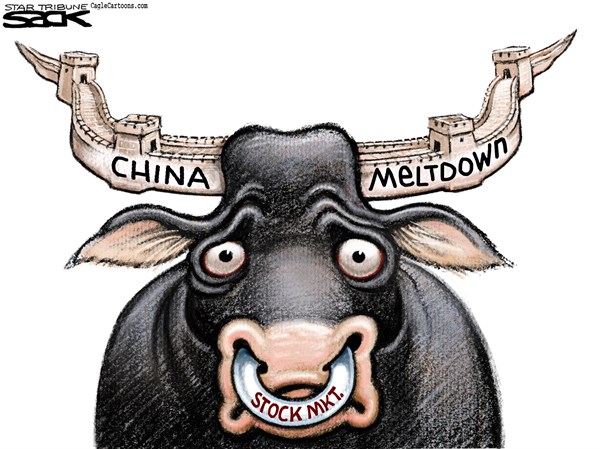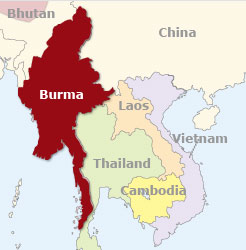Pratim Ranjan Bose
The last fiscal was a milestone
year in the history of Indian power sector.
The generation capacity of the
world’s third largest electricity market grew by a record 9.6 per cent, much
ahead of China ’s 4 per cent
and 0.7 per cent of the US .
The growth was driven by the
mammoth thermal power capacity addition programme, initiated by the former UPA
government (and is continued by the current Narendra Modi government in Delhi),
that ended up pushing the share of coal based electricity to 74 per cent in
2014, higher than China’s 72 per cent (down from 79 per cent in 2011).
But, the achievement will look
pale if compared against the generation records.
In the peak summer months of
April-June 2015 coal-fired electricity generation has gone up by a mere two per
cent that too riding on distress sale by private producers (IPP), accounting for one-third of India’s coal-based electricity
capacity of 160671 MW.
Distress sale of
electricity
The reasons behind the distress sale of electricity are simple, as
against a projected 80 per cent (or more) capacity utilisation to break-even; IPPs
record a mere 55 per cent plant-load factor (PLF). In other words, half of the
53,834 MW private capacities are stranded and are hard pressed to meet payment
obligations to lenders. And, in a short-sighted or suicidal move, they decided
to sell power merely at recovery of fuel cost.
The desperation on the part of
private producers had cast a shadow on the capacity utilisation of the Government
run utilities, the mainstay of Indian power sector. With electricity available
in the open market at as low as Rs 2 a unit, there was a drop in demand for power
generated by the government sector that was otherwise considered cheap.
Records available with India ’s
electricity regulator suggest both the Central and the State Government run
utilities recorded a marked drop in generation, during the summer months. This
is unheard of in the history of India ’s
electricity business.
The country’s largest electricity
producer, the Central Government owned NTPC (45,500 MW) - that was known for
high capacity utilisation - recorded a steep fall in PLF from 78 per cent to 73
per cent over the same period last year. Capacity utilisation of State Government run utilities (58340 MW), is down from 62 per cent to 56 per cent.
Coal stock overflowing
To cut the long story short, India ’s
electricity generation business is facing an unprecedented crisis. The rush for
capacity addition, without creating ground for higher demand, ended up blocking
huge capital in unproductive generation assets. The trend was setting in for
last two years. The Indian government and the industry in their good wisdom was blaming it on non-availability of fuel, but no more.
Generation utilities were flushed
with coal (with three weeks average stock) throughout the summer months, so
much so that they are now refusing to take more deliveries. The Government-owned Coal India (CIL) sold less fuel to power sector in July-August, when
compared to the same period last year, resulting into sharp rise in pit-head
stock - once again blocking precious capital.
A rough assessment says one-third
of the additional CIL production in April-June quarter and two-third of the added
capacity in July-August didn’t find takers. For the first time in decades, the
coal major saw accrual of inventory in first half of the fiscal. Normally
inventories are depleted in the first half when 40 per cent of the annual
output is produced and demand for fuel remains high.
Following Chinese example?
There are many reasons behind the
crisis in India ’s
power sector and, one can safely assume this storm will not pass overnight. But
before we delve into that, a look at global affairs will tell you that stranded
power station is no isolated phenomenon.
In the deregulated developed
economies, especially in the US
– the country that records the highest in per capita energy consumption –
plant-load factor remains low. That is legacy of an economic model built on
opulence. It has little relevance to a developing country, which is aiming to
build an industrial empire riding on cost arbitrage. The Indian case is rather
comparable to the Asian superstar China ,
which is equally sensitive to electricity tariff and (like India ) the
power sector is largely regulated.
Having expanded its generation
capacities in leaps and bounds over the last two decades, Chinese electricity
companies have been in trouble for last five odd years. In 2011, China ’s
five largest power companies – Huaneng, Datang, Huadian, Guodian and China
Power Investment (CPI) - suffered an aggregate loss of more than $2.4 billion. This
was primarily due to low tariff realisation vis-à-vis high cost of fuel owing
to deregulation of coal prices. According to The Time Weekly, 17 out of 24
electricity firms listed on Shanghai
and Shenzhen stock exchanges were stressed in 2012.
While the global commodity market
meltdown finally resolved the issue of volatility in fuel prices; the unabated
expansion of coal fired generation capacity vis-à-vis slow down in economic
growth, coupled with marked decline in renewable energy tariff and a public
outrage against pollution put Chinese electricity sector face-to-face with a
colossal waste.
As a recent report in Business
Spectator puts it, “The old factoid about China
adding one coal plant per week, deserves to be updated — China is now adding one IDLE coal power plant per week.”
More capacity, more trouble
Chinese electricity generation sector
is four-and-a-half times bigger than India . Naturally it would have a
much bigger fleet of idle capacities. But Indian problem is not insignificant
either.
All of the 19,000 MW coal fired
station added since June last year are idling for lack of buying activity.
Overall some 20,000-25,000 MW private utilities and another 10,000-15,000 MW
State sector capacities are stranded. With another 15,000-17,000 MW thermal
capacities in advanced stage of commissioning, the list of idle capacities may only be longer by the end of this
fiscal.
The supply pressure will further
intensify if the Modi government is successful in doubling the generation capacities (that includes a mammoth 75,000 MW renewable capacity addition
target) in next five years. Considering the steady decline in generation cost of renewable energy, the
outlook is particularly grim for thermal sector; unless there is a dramatic surge
in demand.
The India government is banking on its ‘Make-in-India’
campaign and rural electrification drive to strengthen demand for electricity.
Theoretically, they are not wrong. High government spending in social security, over
the last decade, has created a huge latent demand for electricity in the rural India that
is remaining untapped due to low proliferation of transmission and distribution
network.
Almost an entire Bihar (100
million population) and half of UP (200 million population) are not connected
by electricity grid, thereby pulling down the national per-capita consumption
to a minuscule 760 kilowatt hour (Kwh), which is a fraction of Chinese average (3475
Kwh).
The UPA government wanted to
address this issue as a precursor to capacity boost but ended up with limited success.
The Modi government too targets 100 per cent rural electrification. Probably, they will go another few steps ahead with the agenda. But I
doubt if they will reach anywhere near the target in the stipulated five years.
The reason lies in the complexity
of India ’s
electricity administration that is a joint responsibility of the Centre and the
States. As per the federal structure, electricity distribution is an exclusive
domain of the State governments. And, despite at least two rounds of financial
restructuring initiatives taken by the Delhi, a majority of the State distribution
utilities (discoms) are cash-starved due to prolonged abuse by the politics. To know the extent of the malady you may read my article here.
The Centre is now trying to enforce fiscal discipline in discoms by a fresh
amendment in Electricity Act, but that is yet to be cleared by the Parliament.
Industrial growth holds key
But a bigger issue, probably the
biggest of all, is yet to be resolved: Can India pull up its growth numbers?
The recent slowdown in
electricity demand is directly linked to the country’s dwindling industrial growth figures. The last fiscal was one of the worst in the history of corporate India
and the latest cut in growth forecasts by Moody’s indicate that the trouble is
not over yet.
The Modi government has surely
attracted global attention in its effort to push India as a manufacturing
destination, as is reflected in the rush of investment proposals. But the moot question remains: How much of it will bear fruit and how soon? Considering
the huge build up of idle capacities; the longer the gestation, more prolonged will
be the pain for India ’s
financial sector that is burdened with a stockpile of sticky assets.
A recent report by the Cleveland
based Institute of Energy Economics and Financial Analysis (IEEFA) says a lower than projected growth may leave the economy with “$100 billion of
stranded thermal power plants running at low utilisation rates and delivering
continued net losses for shareholders and banks”.
***
Tweet: @pratimbose
(Disclaimer: Graphics are collected from the web. Will be removed in case of any objection.)







